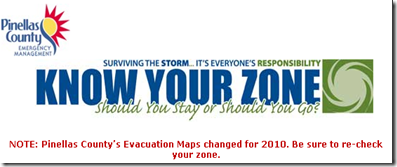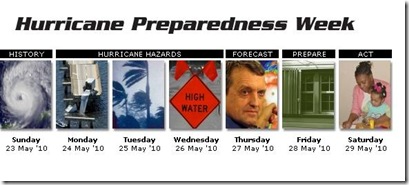# 4594
Not much left to these apartments after Andrew hit Homestead in ‘92.
Today is day three of Hurricane Preparedness week, with today’s emphasis on High winds associated with these tropical systems.
While storm surge is the greatest concern to those living in low-lying coastal areas, hurricane force winds can extend a hundred miles or more inland during a landfalling hurricane. Often hurricanes spin off tornadoes when they come ashore as well.
Hurricanes are measured by the Saffir-Simpson Scale, which bases their strength on sustained wind speeds. Anything CAT 3 or higher is considered a major hurricane.

Even a CATEGORY 1 storm can spin up tornadoes, or produce wind gusts substantially stronger than their sustained wind speeds. Older Mobile homes, RVs, and even some conventionally built structures may not withstand a CAT 1 storm.
And while great strides have been made over the past few decades in forecasting the path (out to about 48-72 hrs) of hurricanes, meteorologists are far less able to predict intensity changes of these storms.
Just before landfall in 2004, Hurricane Charlie unexpectedly changed direction and ramped up from a moderate CAT 2 to storm to a major CAT 4 in just three hours, leaving coastal residents no time for evacuations.
If you live in vulnerable areas, you need to be aware of your evacuation zone, many of which have been recently revised due to a better understanding of storm surge, flooding, and wind damage risks.

Since I live in a vulnerable area, and in a structure that might not withstand a hurricane, I’ll be evacuating to a safer location should a storm threaten.
The intensity of a landfalling hurricane is expressed in terms of categories that relate wind speeds and potential damage. According to the Saffir-Simpson Hurricane Scale, a Category 1 hurricane has lighter winds compared to storms in higher categories.
A Category 4 hurricane would have winds between 131 and 155 mph and, on the average, would usually be expected to cause 100 times the damage of the Category 1 storm. Depending on circumstances, less intense storms may still be strong enough to produce damage, particularly in areas that have not prepared in advance.
RELATED INFORMATION
• HIGH WIND SAFETY ACTIONS
• SAFFIR-SIMPSON HURRICANE SCALE (updated February 2010)
• HURRICANE WIND DECAY
• HISTORIC HIGH WIND EVENTS
• RISK AREAS
For more information, visit FEMA’s 2010 Hurricane Season website.
Hurricane Season 2010
Hurricane Preparedness Week during 2010 will be held May 23rd through May 29th. FEMA is urging residents to be prepared for their personal safety and survival in case a hurricane threatens their community. To assist in these efforts, FEMA, along with the National Oceanic and Atmospheric Administration, is helping to raise awareness of steps that can be taken to help protect citizens, their communities and property.
Be Prepared for 2010
- Hurricane Preparedness from Ready.gov (PDF 27KB, TXT 6KB)
- The Disaster Declaration Process (PDF 278KB, TXT 6KB)
- Hurricane Season and Flooding (PDF 278KB, TXT 4KB)
- Inland Flooding (PDF 30KB, TXT 4KB)
- Preparing for Your Pets (PDF 30KB, TXT 7KB)
- Use of Social Media Tools (PDF 106KB, TXT 12KB)
Additional Resources
Other blogs in this year’s National Hurricane Preparedness Week series include:
Storm Surge Monday
The Crossroads Of The Atlantic Storm Season
You Don’t Have To Live On The Coast

